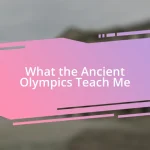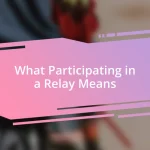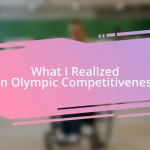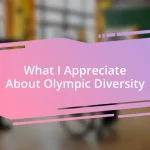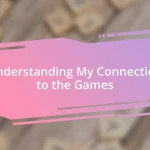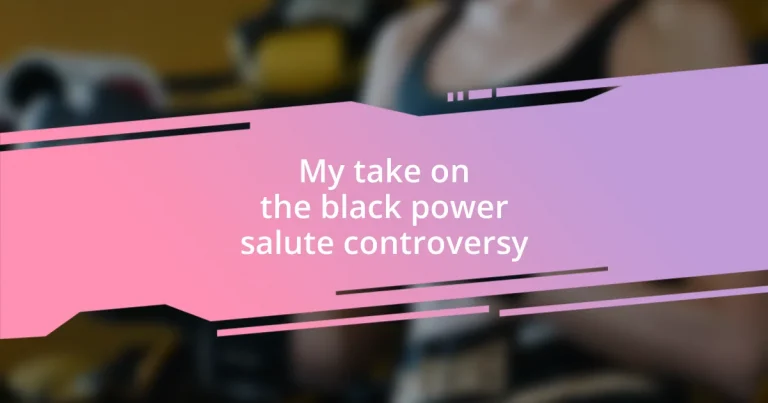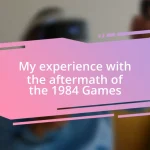Key takeaways:
- The Black Power Salute, popularized by Tommie Smith and John Carlos in 1968, symbolizes resistance and unity in the fight for racial equality.
- Prominent figures like Colin Kaepernick view the salute as a means of activism, sparking debate on the intersection of sports and politics.
- The salute fosters cultural significance and generational dialogue, inspiring communities worldwide to engage in conversations about justice and equality.
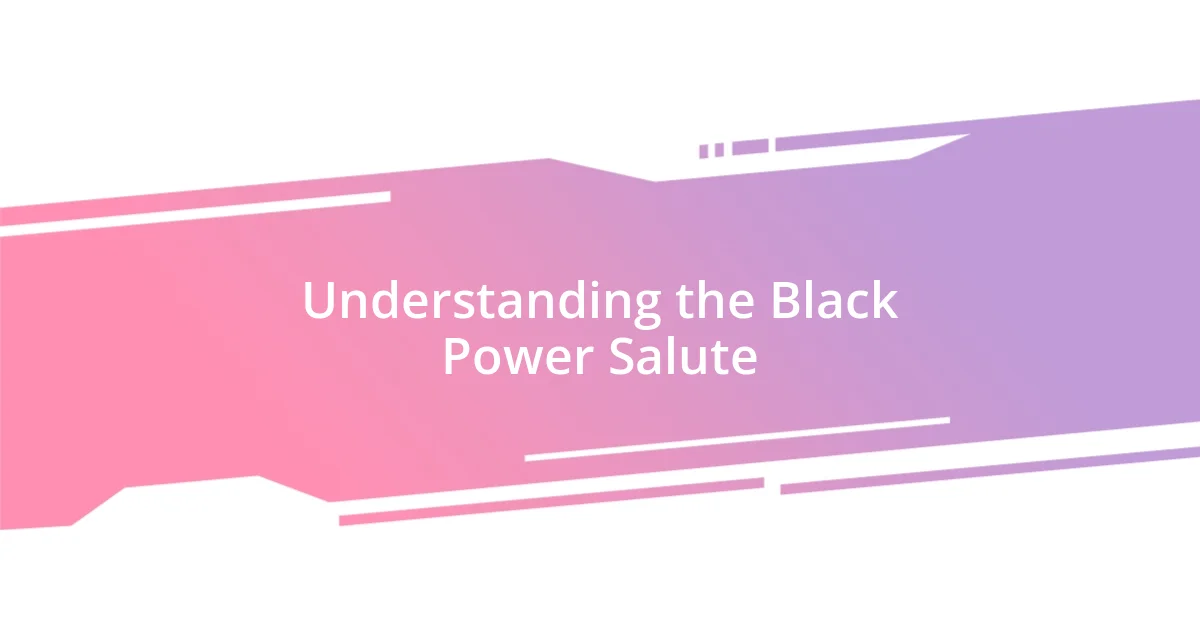
Understanding the Black Power Salute
The Black Power Salute, often seen as a powerful symbol of resistance and pride, emerged during the Civil Rights Movement. When I first learned about its history, I felt a mix of admiration and curiosity. Can you imagine standing up, among a crowd that’s both hopeful and tense, raising your fist as a declaration of unity and strength?
This gesture, most famously used by Tommie Smith and John Carlos at the 1968 Olympics, was more than just a protest; it encapsulated the struggle for racial equality and social justice. Watching that moment in a documentary stirred deep emotions within me. It juxtaposed their athletic triumph with the broader fight against oppression. How profound it is that a simple act could embody such resilience!
Understanding the Black Power Salute means acknowledging its roots in a painful yet hopeful history. I often reflect on how an expression of anger can also be a bridge to empowerment. It’s about pride in identity—what would you feel if your own heritage faced constant denigration? That’s the essence of this salute: it’s an unyielding voice asking to be heard.
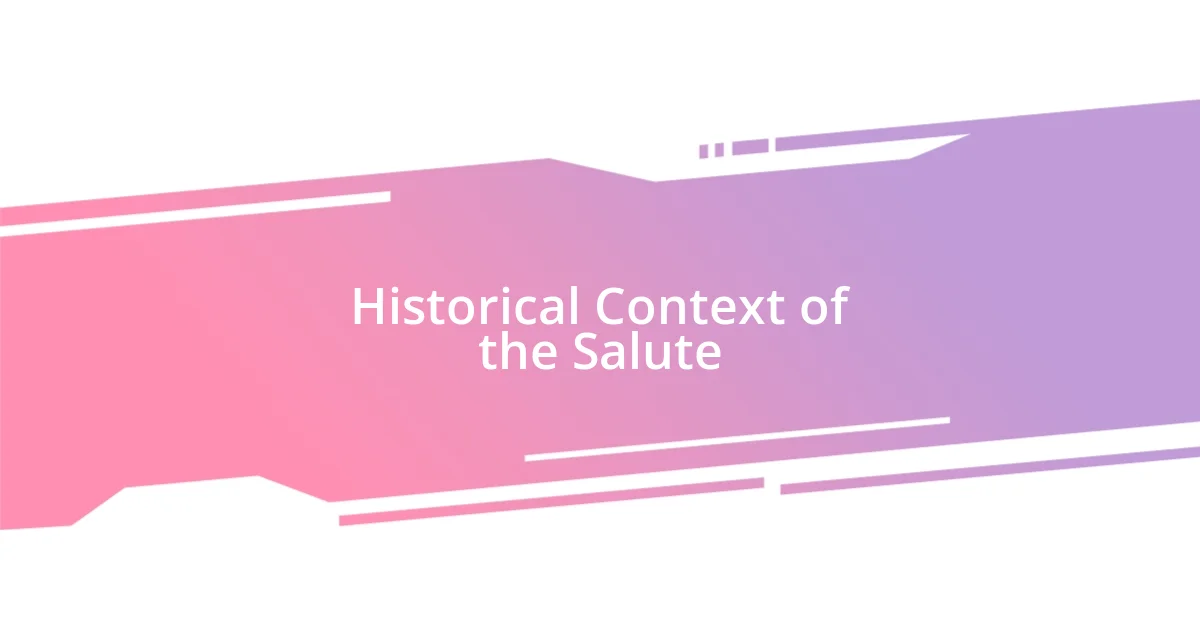
Historical Context of the Salute
The Black Power Salute has deep historical roots that trace back to the African American struggle for civil rights. This powerful gesture not only symbolizes resistance but also unifies various movements advocating for social justice. When I think about it, I recall watching footage of protests that filled city streets, each raised fist echoing a commitment to the cause, a testament to resilient spirits confronting deep-seated injustices.
- Originated during the Civil Rights Movement in the 1960s, fueled by widespread racial discrimination.
- Publicized by athletes Tommie Smith and John Carlos during the 1968 Mexico City Olympics, symbolizing solidarity among African Americans.
- Inspired by the broader political climate, including the Black Panther Party’s advocacy for self-determination and equality.
- Represents a complex blend of pride, resistance, and a call for visibility in a society that repeatedly marginalized Black voices.
I remember standing in a community center as elders shared stories from those tumultuous times. Their words carried a weight that made my heart race, reminding me that every raised fist represents countless struggles and dreams deferred. This history is a living testament to the ongoing fight for dignity and respect, a journey that’s far from over.
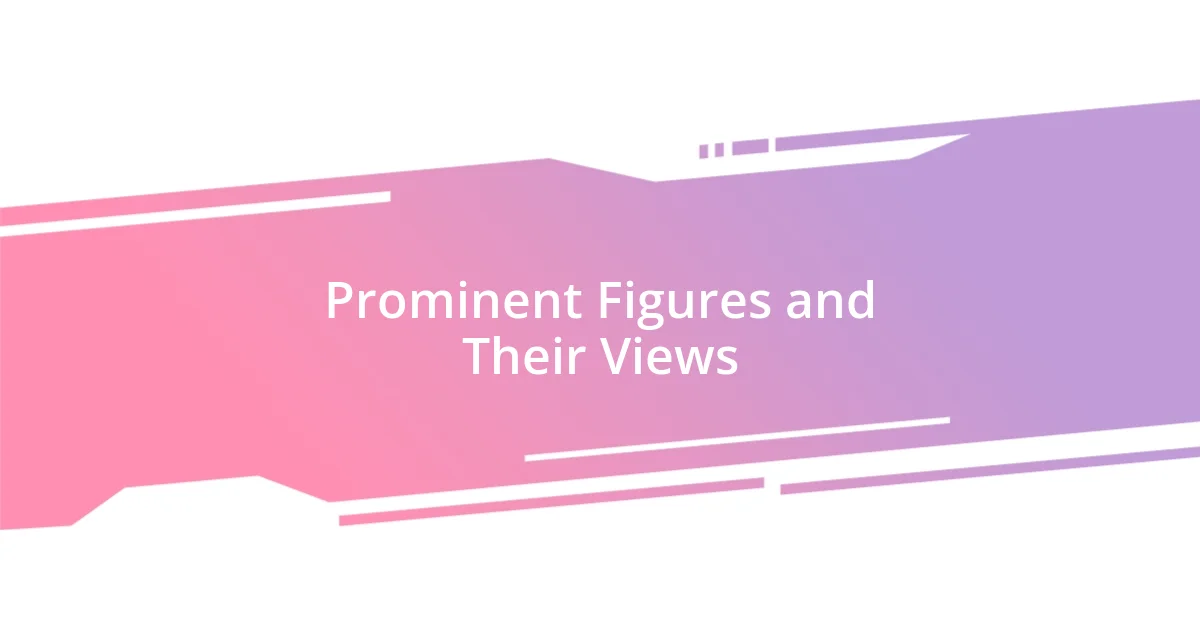
Prominent Figures and Their Views
When examining the views of prominent figures, it’s fascinating to see the spectrum of opinions about the Black Power Salute. For instance, athletes like Colin Kaepernick have embraced this gesture as a means of raising awareness about racial injustice. I’ve read interviews where he expresses that it’s not just about the salute itself but what it represents. Isn’t it powerful to think that one action can amplify so many voices and stories?
On the other hand, some critics, including notable sports commentators, argue that political gestures have no place in sports. I remember watching a heated debate on television where one commentator passionately contended that sports should remain apolitical. It left me pondering the true intersection of activism and athletics. Is it possible to disentangle the two when consequences of systemic racism infiltrate every aspect of life, including sports?
Moreover, historical figures like Muhammad Ali have left indelible marks on the conversation. Ali’s resistance to the Vietnam War and his willingness to sacrifice his title resonates deeply with the sentiments surrounding the salute. Reflecting on his courage, I often feel a renewed sense of inspiration. His actions compel us to consider: How far would we go to stand up for our beliefs? These perspectives not only enrich the narrative surrounding the Black Power Salute but challenge us to think critically about what we stand for.
| Figure | View on the Black Power Salute |
|---|---|
| Colin Kaepernick | Sees it as a powerful means to raise awareness for racial injustice and a call to action. |
| Sports Commentators | Argue that politics should be kept out of sports, claiming it dilutes the integrity of the game. |
| Muhammad Ali | Promoted the importance of standing up for personal beliefs, emphasizing sacrifice in the fight for justice. |

Impact on Sports and Activism
The impact of the Black Power Salute in sports has been profound, stirring conversations that go beyond the playing field. I remember attending a sporting event where the national anthem played, and I noticed several athletes who took a knee in solidarity, echoing the sentiments of the salute. It made me ponder how these gestures often transcend the sport itself, becoming a collective cry for justice that resonates with fans everywhere.
When I reflect on the activism that stems from the Black Power Salute, it’s clear that sports have long been a platform for social change. Iconic moments, like those during the 1968 Olympics, remind me of how athletes wield their influence, sparking national dialogues on equality. I often wonder, how many young athletes today are inspired by those brave voices? It’s uplifting to think about the future leaders forging connections between sports and activism, as they rally fans to join the cause.
Personally, I’ve seen how these acts of defiance unite communities. Local gatherings often become rallying points for discussions around justice and equality, with the Black Power Salute as a symbol of resilience. It strikes me that every time an athlete raises their fist or takes a stand, they ignite hope and dialogue within their communities. Isn’t it amazing how one simple gesture can inspire collective action and fuel the fight for change?
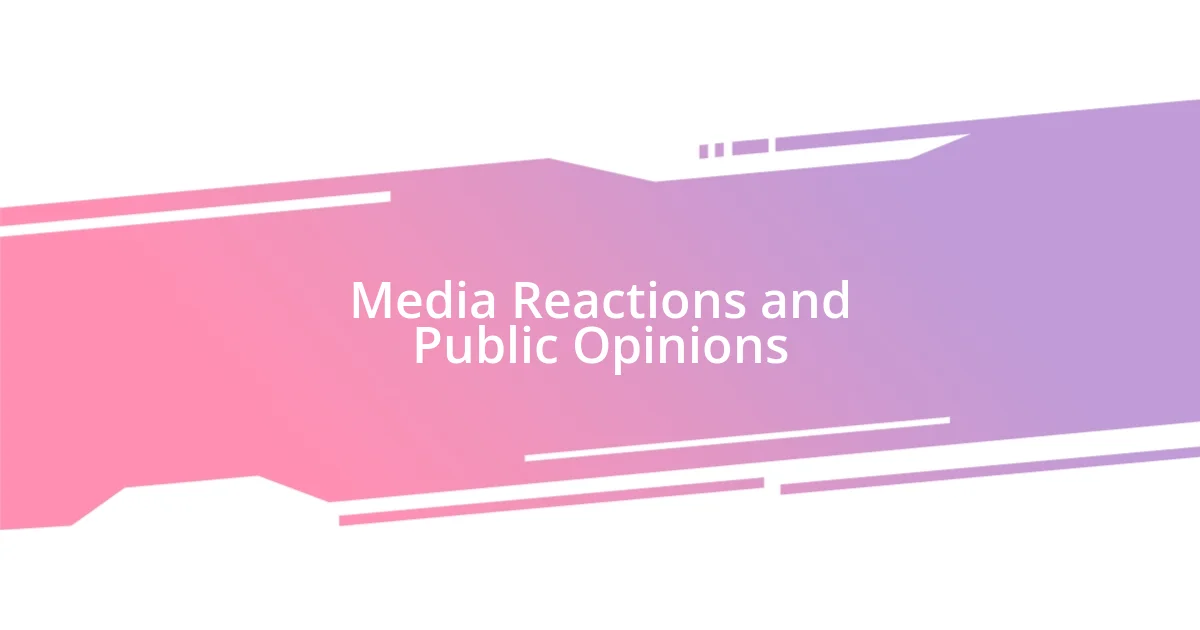
Media Reactions and Public Opinions
Media coverage of the Black Power Salute has certainly been a mixed bag. I’ve noticed that some outlets celebrate it as a bold statement against racial injustice, showcasing interviews with athletes who passionately explain the importance of their actions. However, on the flip side, there are headlines that misconstrue it, framing the gesture as divisive or disrespectful, particularly when it comes to perceptions of patriotism. How easily can context be lost in the quest for sensational news?
When I scroll through social media, the reactions can be just as polarized. I often find myself immersed in heated discussions, where supporters of the salute emphasize its significance in the ongoing struggle for equality, while opponents deem it inappropriate. It makes me reflect on how social media can amplify voices, both for and against—creating an arena where the complexities of such gestures can get oversimplified. Have you ever found yourself caught in an online debate where both sides feel entirely convinced of their stance?
Also, public opinion polls show shifting sentiments over time. Initially, many people were skeptical of athletes using their platforms for activism, but it’s intriguing to see a gradual increase in support. I think this change reflects a growing awareness of social issues within our society. With recent events highlighting systemic racism, it appears that the Black Power Salute has evolved from a controversial act into a crucial part of the dialogue surrounding equality. Isn’t it empowering to think about how collective consciousness can change perceptions?
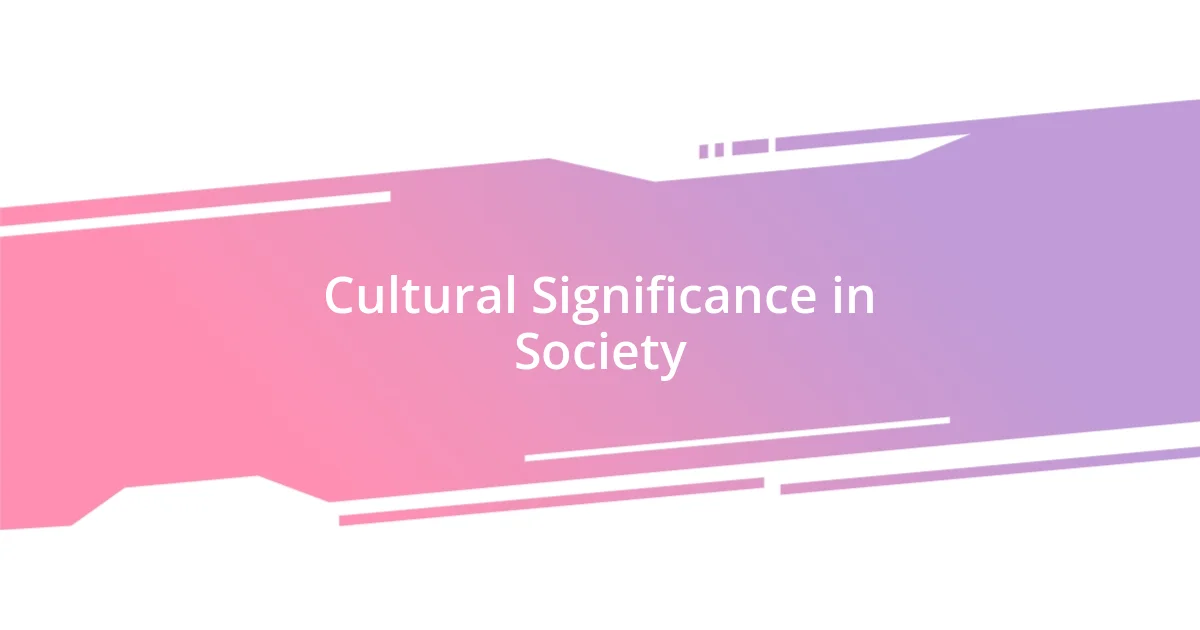
Cultural Significance in Society
Cultural symbols like the Black Power Salute encapsulate broader societal movements, resonating deeply within communities. I vividly recall a community event where someone raised a fist in solidarity, instantly shifting the energy in the room. It made me feel that these gestures are more than just expressions; they weave into the fabric of our cultural identity and affirm shared experiences of struggle and triumph.
In my neighborhood, I’ve witnessed how the Black Power Salute has sparked meaningful conversations among both young and old. One day, while chatting with a group of teenagers, they shared how seeing athletes raise that fist made them feel proud and connected to a history they barely knew. It astonished me to realize how a simple act of defiance can inform the next generation and help them forge their identities amidst societal pressures. What is it about such symbols that can bridge generations and inspire hope?
Moreover, I can’t help but think about the global impact of the salute. When I travel, I often find that people recognize it as a symbol of resistance and empowerment. I remember having conversations with travelers in different countries who expressed admiration for athletes speaking out against injustice. It’s remarkable how the Black Power Salute transcends borders, evoking a sense of unity that reflects our shared desire for equality. Isn’t it fascinating how cultural gestures can resonate across the globe, illustrating that the fight for justice knows no boundaries?
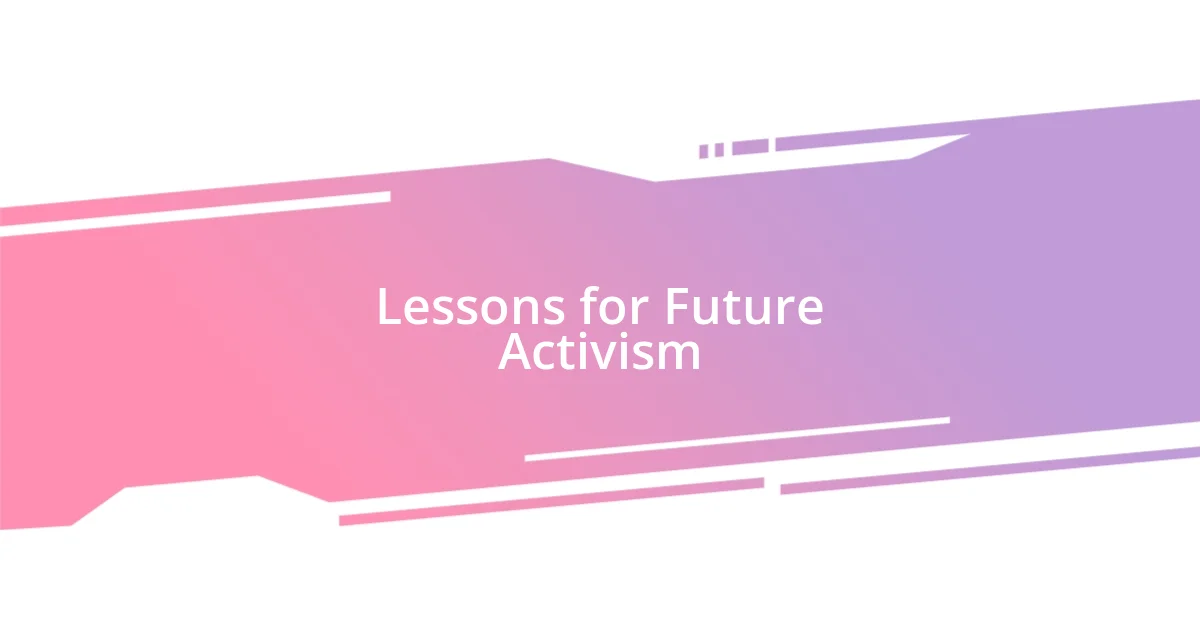
Lessons for Future Activism
In considering the future of activism, one key lesson stands out to me: the power of unity in messaging. I remember attending a rally where leaders from diverse backgrounds came together, each sharing their unique perspectives yet emphasizing a common goal. That experience underscored how crucial it is for movements to present a cohesive narrative. How can we expect the public to engage if different voices pull in opposite directions? It reminded me that clarity and solidarity are essential, especially in a world saturated with mixed messages.
Another takeaway revolves around the importance of context in activism. I often think back to a documentary I watched that traced the evolution of various protests; it highlighted how misinterpretations can derail intentions. I’ve felt the frustration when discussions revolve more around sensationalism than the issues at hand. This emphasizes that activists must communicate not only their actions but also the stories behind them. Have you found yourself distilling complex ideas into digestible insights? That’s the challenge we face: making our narratives relatable without losing depth.
Lastly, I consider the impact of generational dialogue. Recently, I had an enlightening chat with my grandmother about protests she witnessed in her youth. Her tales of perseverance resonate with today’s struggles, reminding me that history is vital in shaping contemporary activism. I often wonder how we can bridge this gap between generations. By engaging across age groups, we can foster a richer, more informed activism that honors past efforts while addressing current challenges. Isn’t it incredible how sharing our personal stories can create a sense of collective responsibility?

